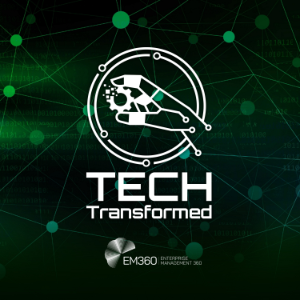
Tech Transformed
Technology Podcasts
Expert-driven insights and practical strategies for navigating the future of AI and emerging technologies in business. Led by an ensemble cast of expert interviewers offering in-depth analysis and practical advice to make informed decisions for your enterprise.
Location:
United Kingdom
Description:
Expert-driven insights and practical strategies for navigating the future of AI and emerging technologies in business. Led by an ensemble cast of expert interviewers offering in-depth analysis and practical advice to make informed decisions for your enterprise.
Twitter:
@EM360Tech
Language:
English
Contact:
+44 207 148 4444
Website:
https://www.em360tech.com/
Email:
max@em360tech.com
AI-Powered Canvases: The Future of Visual Collaboration and Innovation
Duración:00:19:11
Setting Up for Success: Why Enterprises Need to Harness Real-Time AI to Ensure Survival
Duración:00:19:09
How Can AI Bridge the Gap from Observability to Understandability?
Duración:00:29:15
Not just Chatbots: What AI Agents Really Mean for Enterprises
Duración:00:22:19
How to Prepare Your Team for Edge Computing?
Duración:00:23:38
How Can Manufacturers Solve the Mass Customisation Problem?
Duración:00:38:17
How Enterprises Can Leverage IoT and AI to Improve Efficiency and Sustainability
Duración:00:25:04
Why Data Strategy Fails Without Data and AI Literacy
Duración:00:26:42
What Does the Future of CX Look Like with Agentic AI?
Duración:00:23:17
Developer Productivity 5X to 10X: Is Durable Execution the Answer to AI Orchestration Challenges?
Duración:00:24:18
Why an Agentic Data Management Platform is the Next Generation Data Stack
Duración:00:23:35
Are AI Agents the Future of Developer Productivity in the Enterprise?
Duración:00:20:15
The Death of Expertise: What AI Won’t Teach Us
Duración:00:23:54
Multi-Cloud & AI: Are You Ready for the Next Frontier?
Duración:00:23:45
What Are the Key AI Trends Impacting Data Centers Today?
Duración:00:14:48
Who Speaks for the Algorithm? The Emerging Role of the AI Analyst
Duración:00:30:29
Can AI Eliminate IT Tickets? Exploring the Future of Automated IT
Duración:00:35:06
Can Old Hardware Run New AI? How Businesses Can Make Current Hardware Future-Forward
Duración:00:36:24
Can AI Agents Help You Achieve Data Trust and Compliance?
Duración:00:26:04
Can Open Source Ensure AI Works For Everyone, Not Just The Largest Enterprises?
Duración:00:32:58